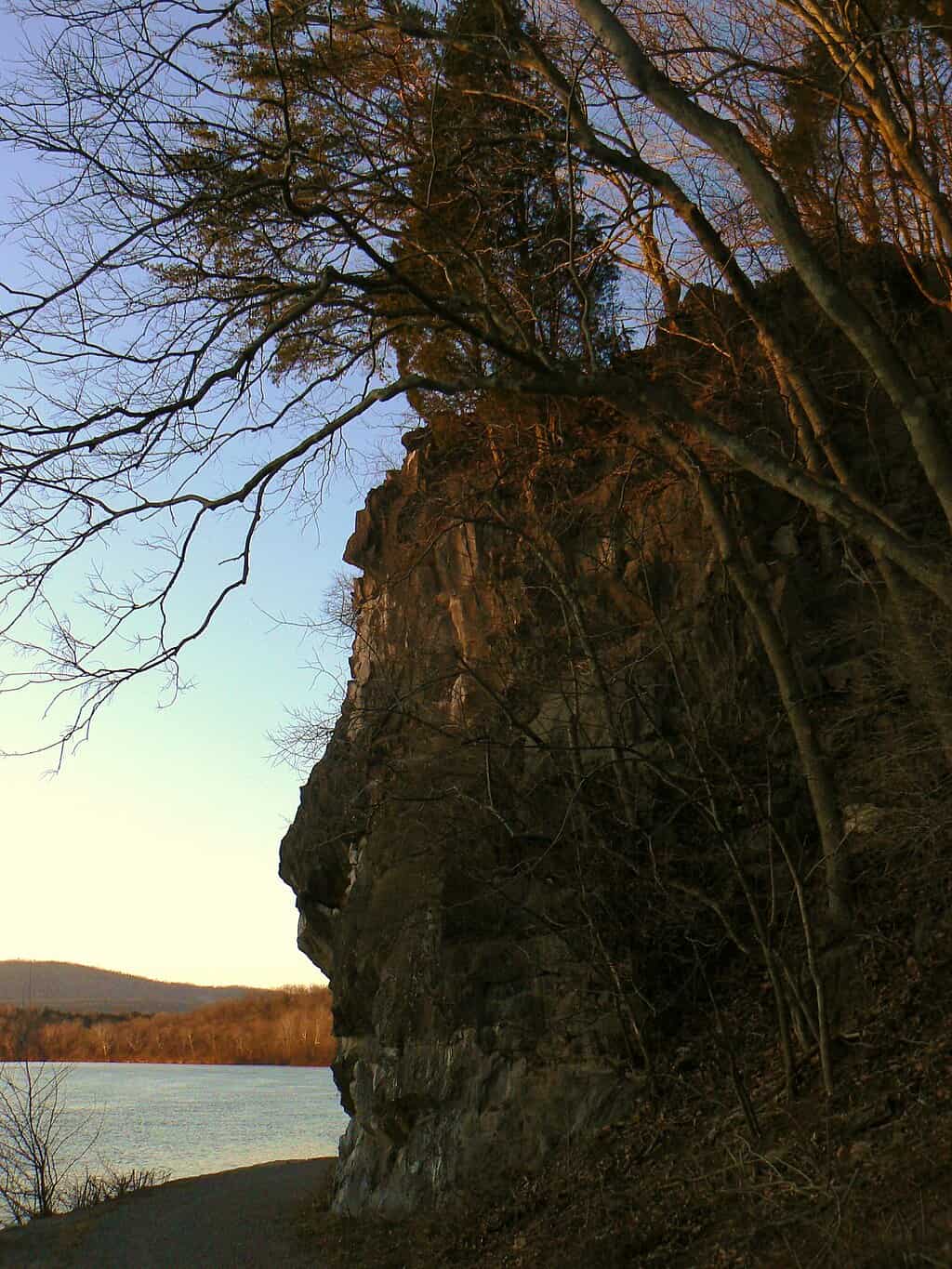
Maryland is called “America in Miniature” because the state offers a variety of landscapes. Almost every type of natural feature exists in Maryland, including mountains, lakes, and subarctic swamps. But one of the most exciting features you can find is the caves. They offer a glimpse into history and the underground world. Are you curious to learn more about the incredible caves in Maryland? Keep reading to discover 12 popular spots and hidden treasures you’ll want to add to your caving or spelunking bucket list.
1. Crystal Grottoes Caverns
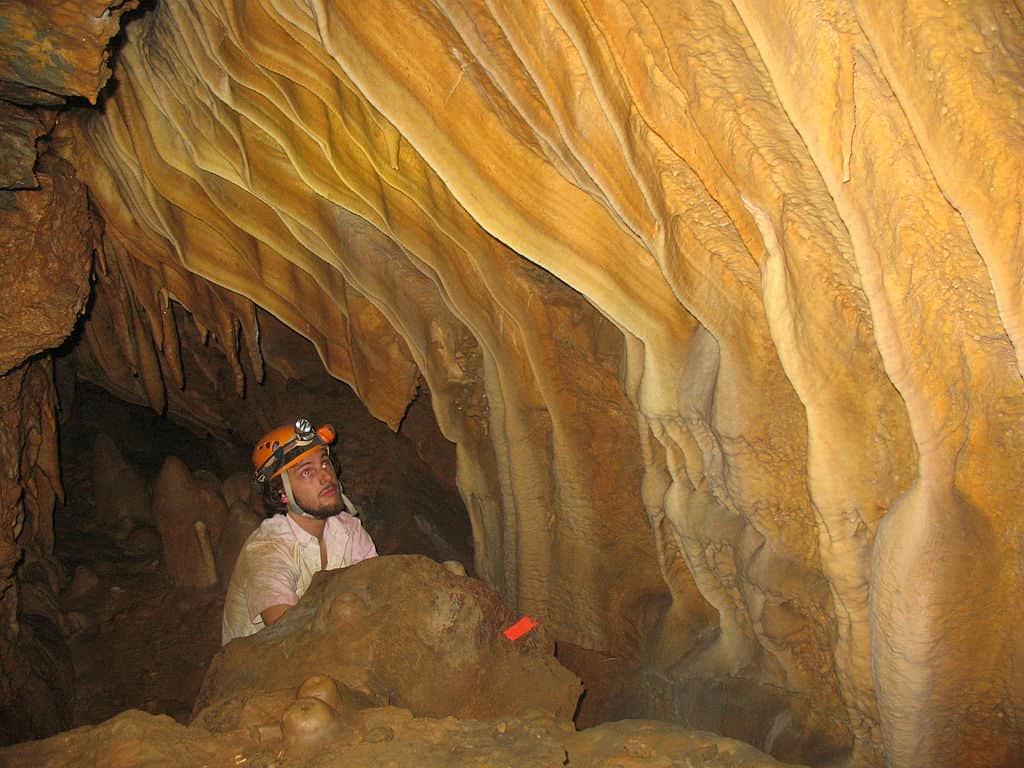
Crystal Grottoes is a famous, family-owned tourist attraction and naturally preserved cavern.
One of the most well-known tourist attractions and incredible caves in Maryland is Crystal Grottoes. This family-owned commercial cave is entirely horizontal and has the most formations per square mile of any known cave. State workers discovered Crystal Grottoes in 1920 while quarrying for limestone to pave State Route 34. By 1922, the Downs family opened the cavern to the public. Today, Maryland’s naturally preserved cavern is open seven days a week for daily tours. Guides answer questions and lead the way through narrow passages filled with stalactites, stalagmites, flowstones, rimstone pools, and columns. The seven well-lit chambers stay at 54 degrees Fahrenheit year-round, so bring a jacket.
2. Camel’s Den Cave
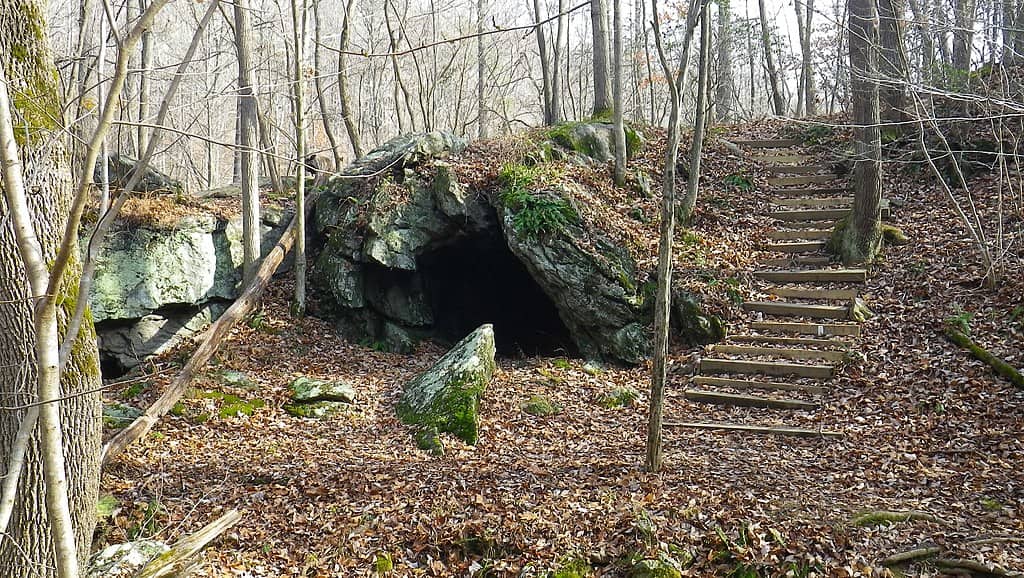
Camel’s Den Cave is a hidden treasure in Patapsco Valley State Park.
You can find Camel’s Den Cave in Maryland’s first and largest state park – Patapsco Valley State Park. The park is over 16,000 acres and covers four Maryland counties. Although heritage sites such as the Thomas Viaduct and the Cascade Falls Trail are two of the top spots to visit in the park, Camel’s Den Cave is one of the most incredible caves in Maryland. What makes it so special is that it’s the only cave in Howard County and is part of the ghost town of Daniels.
The cave is small and shallow, only about 6 feet wide, 8 feet high, and 15 feet long. It’s also made of Cockeysville marble, a type of sedimentary rock. It was most likely used as a shelter by the Piscataway and Susquehannock tribes and early settlers. Now, it’s an interesting historical relic. The hike along the steep hillside with rich fauna takes visitors down one of the least visited trails in the Patapsco Valley, but the trip is worth every step.
3. Devil’s Hole Cave
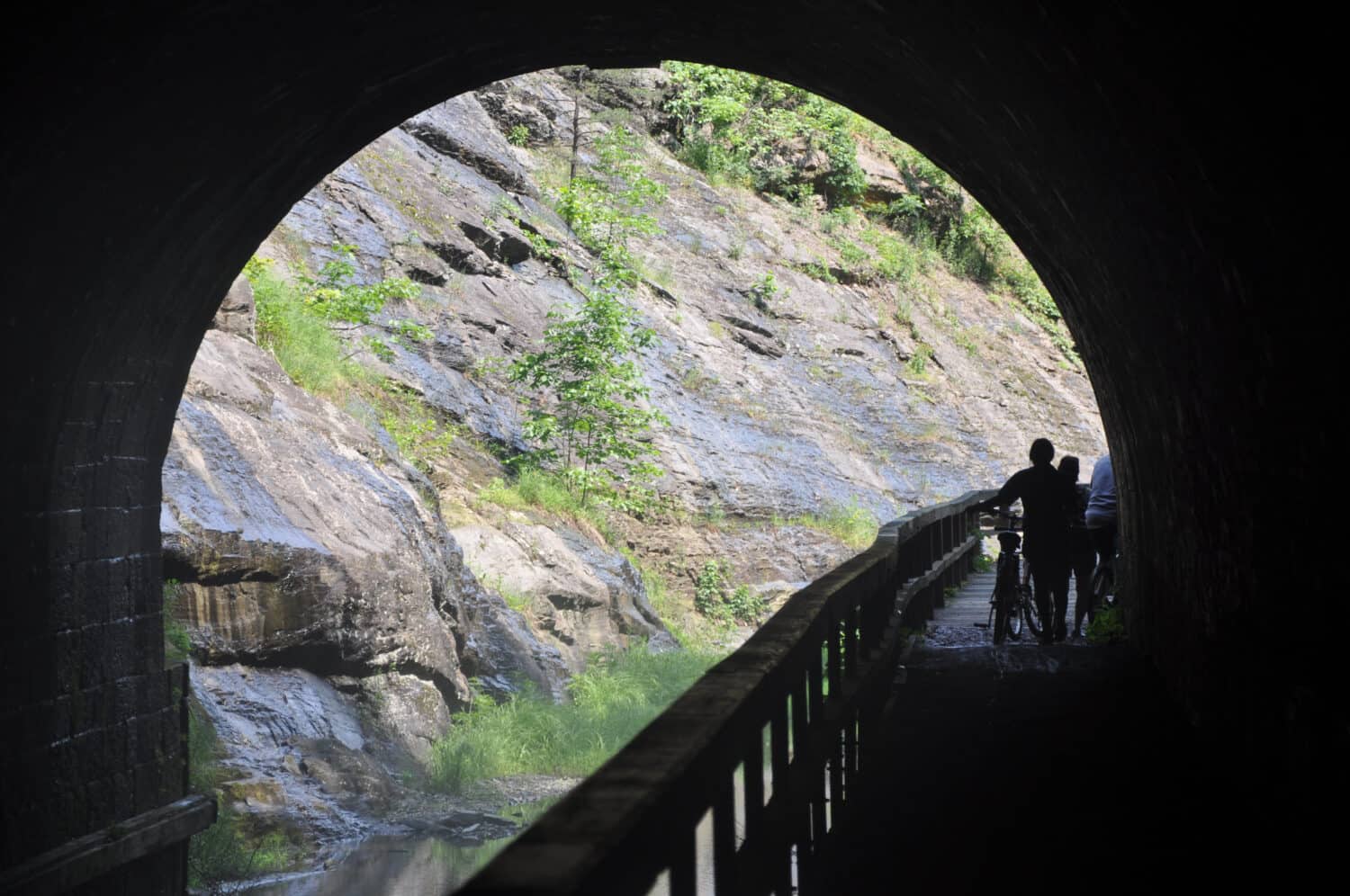
One of the largest caves in Maryland and the Paw Paw Tunnel are along the Chesapeake and Ohio Canal.
©KQW Photography/Shutterstock.com
Devil’s Hole is one of the largest and most incredible caves in Maryland located one mile north of Twiggtown, in the Keyser Member of the Helderberg Limestone. It’s a combination of two different cave systems accessed through a narrow 12-foot shaft at the bottom of a sinkhole. At the bottom of the sinkhole are two rooms with passages that lead to the rest of the system. The entrance drops down 200 feet into an eroding stream passage. You can see a series of small waterfalls and cascades along the way.
It’s recommended for experienced spelunkers because of the vertical climbing, crawling, and squeezing into tight spaces required to move through the passages. Spotting flowstones, stalactites, and draperies is rare, but they are scattered among the walls. During wet months, stream water flows and seeps into the cave, causing it to occasionally reach the ceiling.
4. Twiggs Cave

Twiggs Cave is only about about 1,500 feet away from the historic Twigg family property.
©Tara Ballard/Shutterstock.com
Robert Twigg bought land in 1768 known as Sink Hole Bottom in what is now Allegany County. A descendant of his opened the land to Twiggs Cave to the public in 1898. In fact, the Twigg property is only about 1,500 feet away from the entrance on the eastern slope of the Helderberg Limestone Formation. Spelunkers have to squeeze themselves through the opening, which is a mere 30 inches in diameter, then drop down a 25-foot vertical shaft straight to the heart of the cave.
But what makes this cave so unique is the large amount of clay in the rooms. There is so much that the first room forms large “mud glaciers.” However, the cause of the clay that is between an inch and a foot thick throughout most of the system is unclear. Lastly, the lowest tunnel in one of the most incredible caves in Maryland features shallow pools, a stream, and a 50-foot waterfall.
5. Killiansburg Cave
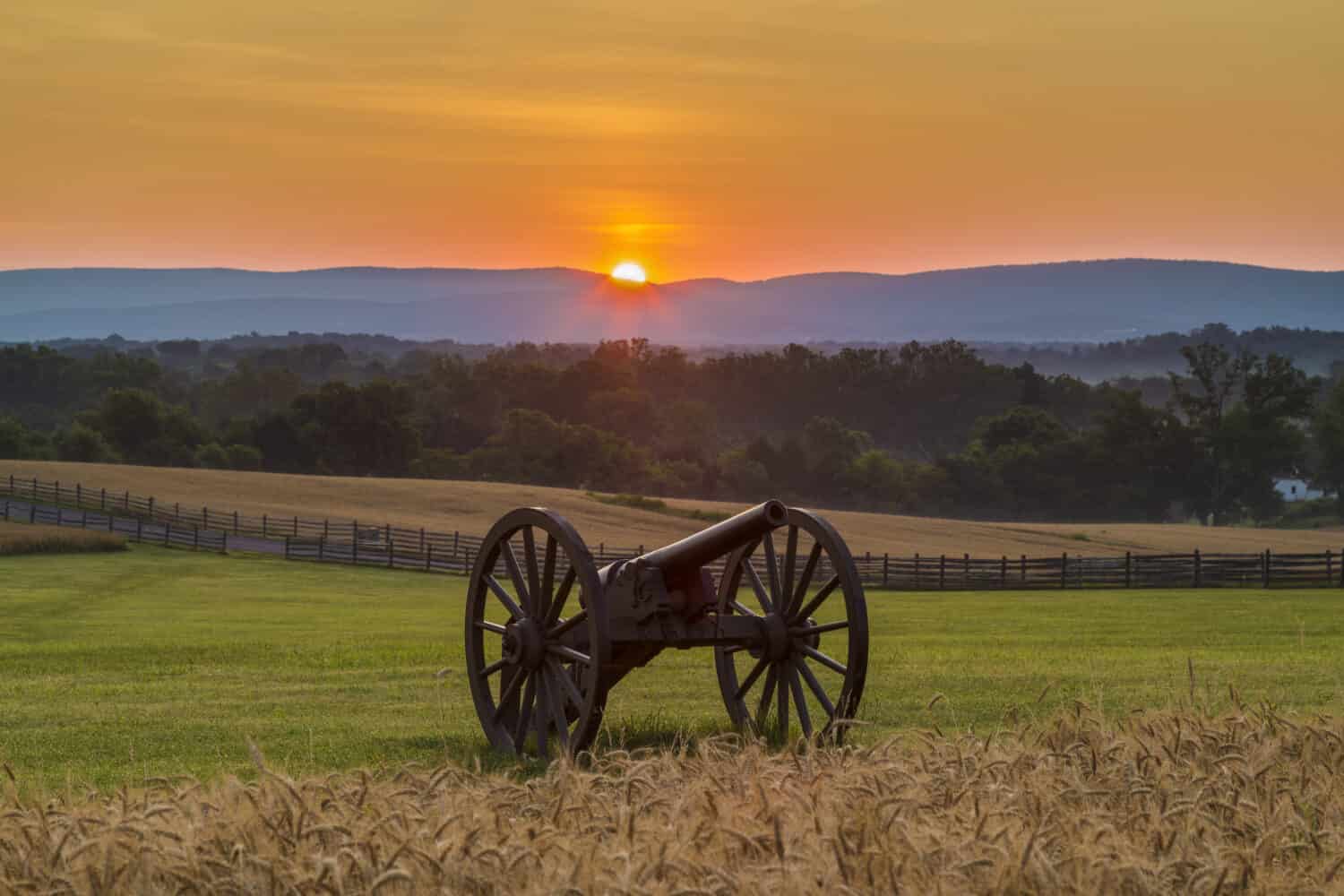
Residents and soldiers fleeing from the scene of the Battle of Antietam took shelter in the Killiansburg Cave.
©Adam Parent/Shutterstock.com
The 1862 Battle of Antietam was the deadliest one-day battle in American history and was a turning point of the American Civil War. But what does that have to do with a cave? Killiansburg Cave was one of many local caves used as a resting point for residents fleeing the violence of the battle. In fact, runaway soldiers took shelter in places like Killiansburg Cave. This historical treasure and woodland cave is located along the Chesapeake and Ohio Canal and Potomac River by mile marker 75.5. From the Ferry Hill Visitor Center, you can reach the opening by foot. Visitors can also camp at the Killiansburg Cave Campsite to spend the weekend hiking and exploring the grounds. Smaller caves, including the Snyder’s Landing Caves, are nearby.
6. Howell Caves
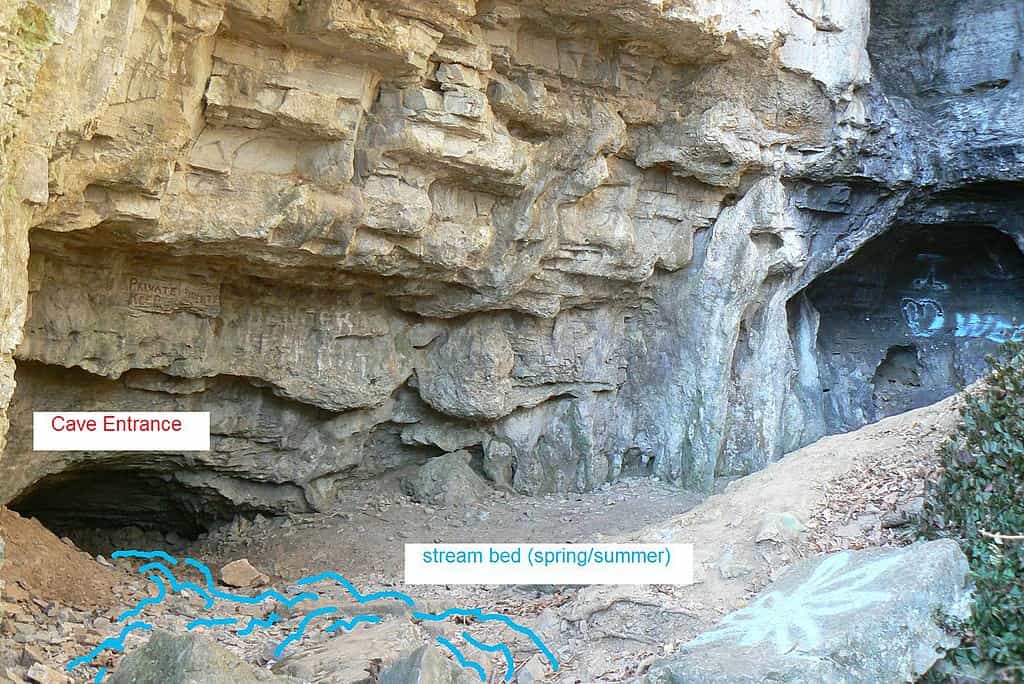
One of the most incredible caves in Maryland is a hidden treasure along the Chesapeake and Ohio Canal.
Another hidden treasure along the Chesapeake and Ohio Canal is Howell Caves. You can find the entrance along the canal and McMahon’s Mill, which has gone by many different names since its establishment in 1778. The limestone cliffs have at least five openings, collectively known as Howell Caves. The main entrance is under a large overhang on the cliff. But beware. The only way to get inside is by crawling on all fours until you reach the first room.
On the other hand, another entrance to the system is the Little Howell Cave, which you can find 200 yards upriver from the cliff entrance. This entrance is easier to access since it’s 5 feet tall and 3 feet wide. However, you must climb 20 feet above the canal to reach it. It’s important to note that the stream sometimes floods the main entrance, making it impossible to enter.
7. Round Top Summit Cave
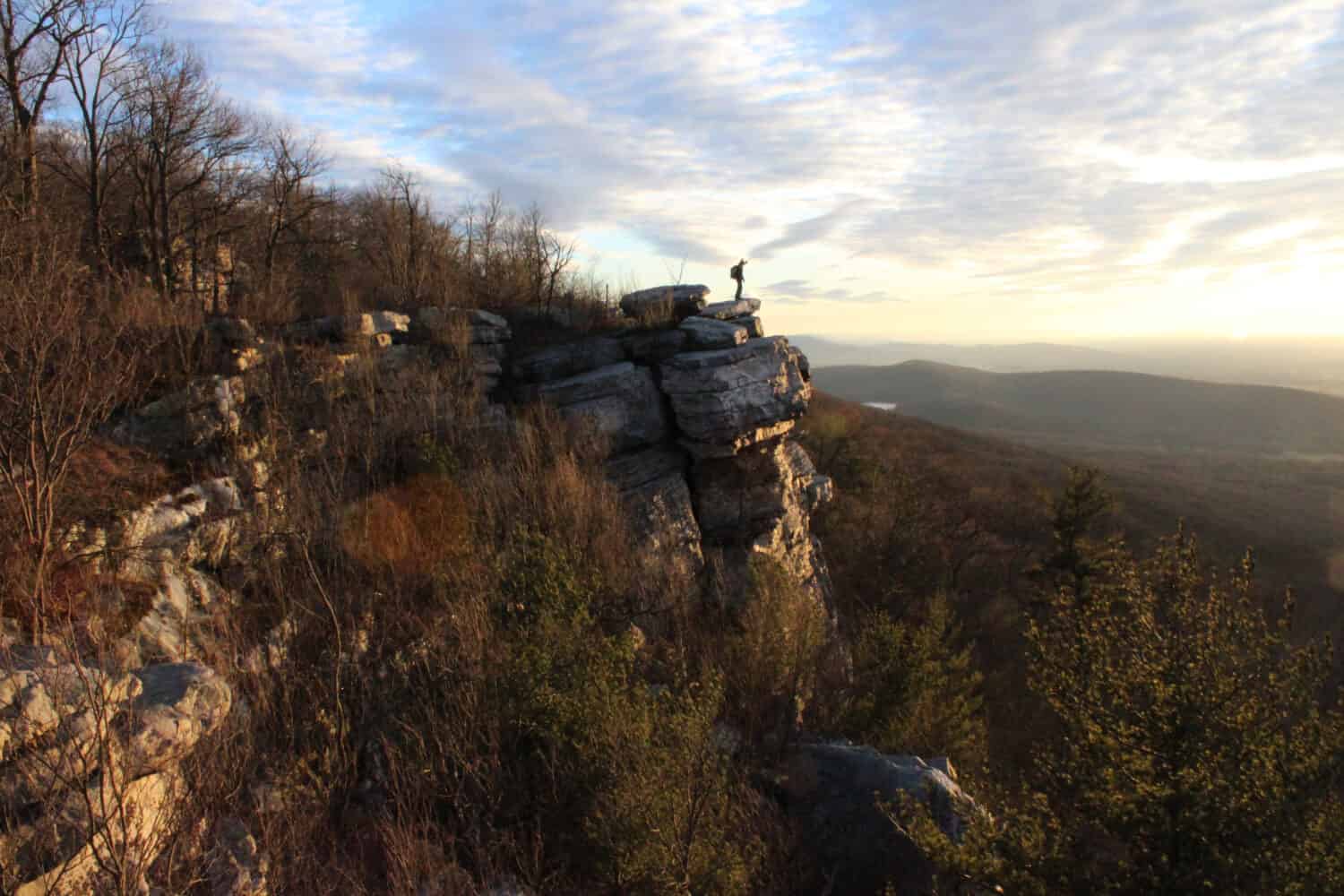
Washington County, Maryland is home to the Black Rock Cliffs and Summits like Round Top Summit Cave.
©Jimmy_k/Shutterstock.com
Round Top Summit is one of the most incredible caves in Maryland but isn’t recommended for novice explorers. The Round Top Summit Cave developed in the black limestone of the Keyser Formation in Washington County. Over 600 feet of the cave system is known, most of which is along a high, narrow fissure-like passage where lots of cave coral is present.
The passage includes vertical drops and jagged squeezes, among other challenging maneuvers. What’s more, the entrance is only 3 feet high, but it’s 5 feet wide. The connected passage is slightly larger but is a steep slope plunging 20 feet south. Here, a vertical drop brings you down another 40 feet, then to a crawlway that opens into the next 500 feet of narrow passages throughout the cave. In addition to cave coral, the path is lined with occasional flowstone.
8. Two Lock’s Cave
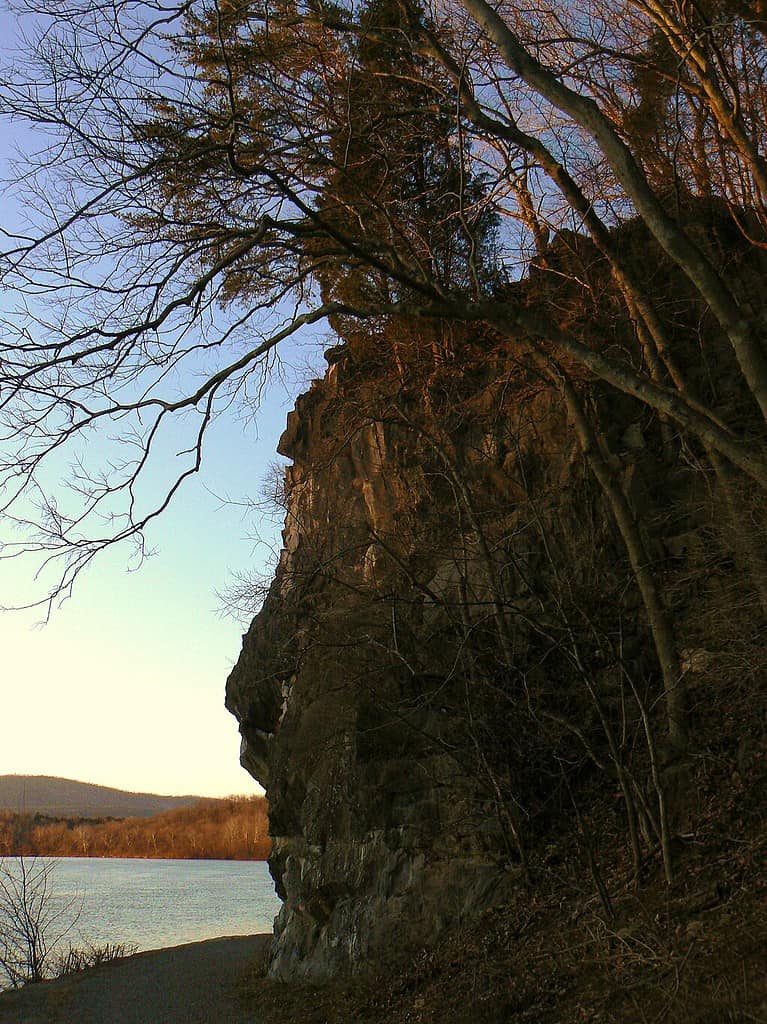
Two Lock’s Cave is along the bluffs of the Chesapeake and Ohio Canal.
Another cave along the bluffs of the Chesapeake and Ohio Canal is Two Lock’s Cave. It comprises several smaller caves with hole-like openings for entrances in the Beekmantown Limestone. However, the main entrance is through the northern opening above the river. Some entrances lead only a short distance into the cliffs with little to see, while some fissures take visitors through narrow passages and crawl spaces deep into the interior of the cliffside. This hidden gem is the perfect place to stop and rest.
9. Tanglefoot Cave
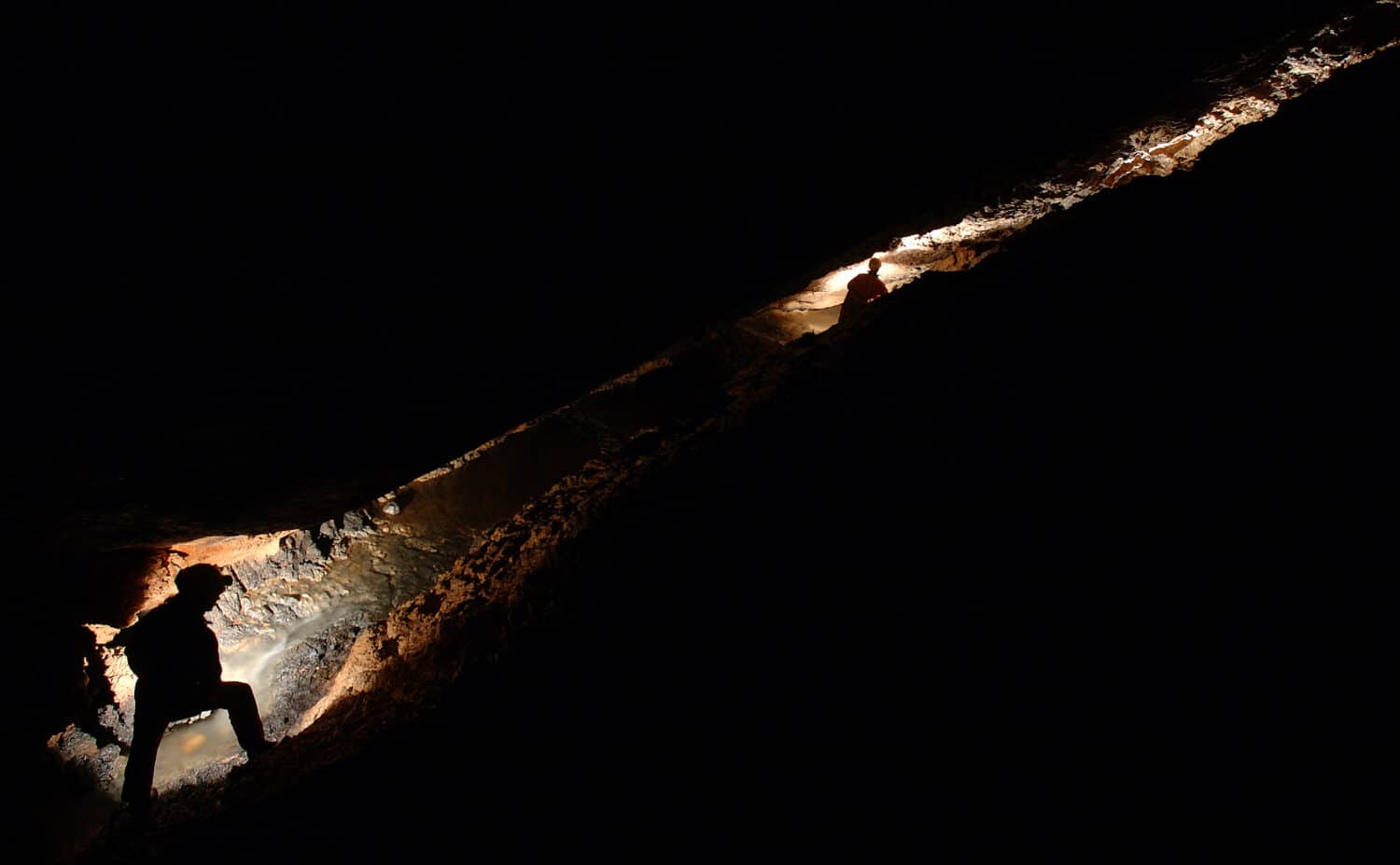
Much of Tanglefoot Cave is unexplored.
©salajean/Shutterstock.com
Tanglefoot is the longest and most recently discovered cave in Maryland. As a matter of fact, it’s still being explored. But we know that it may be the deepest cave in the northeast. Local spelunkers dug out the cave while exploring, using shovels, picks, and plastic buckets to unearth the record-breaking system over dozens of hours. This incredible cave in Maryland features expansive rooms, plunge pools, and waterfalls, as well as stalactites and stalagmites.
10. Cumberland Bone Cave
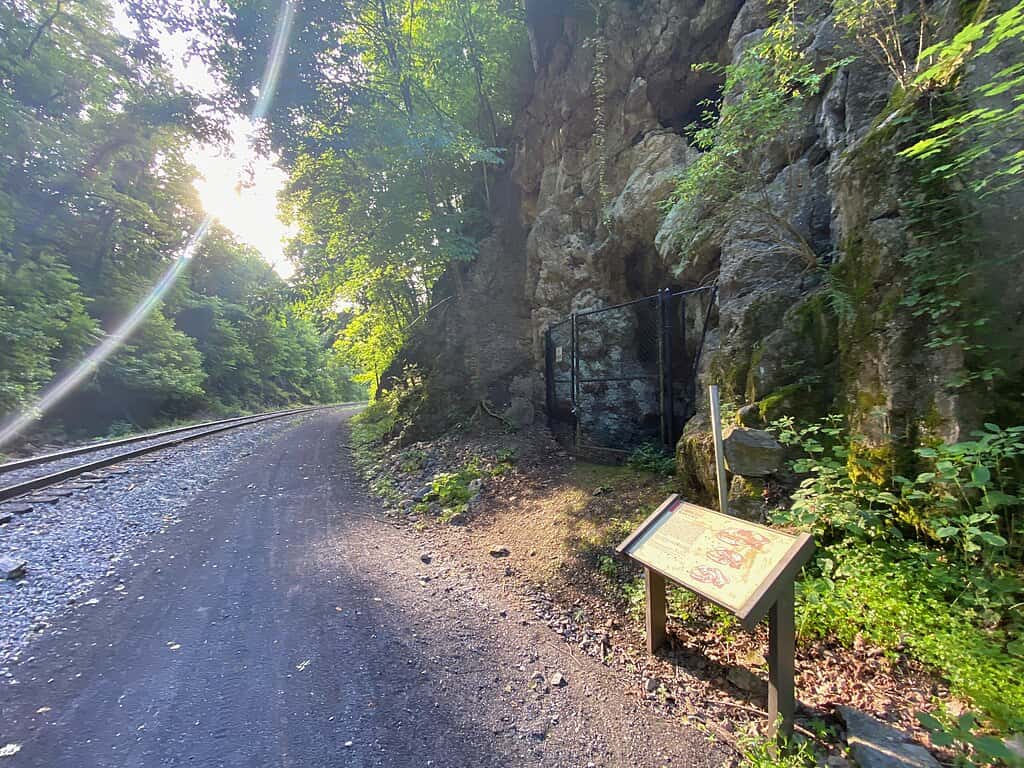
Spot the historical marker along the Great Allegheny Passage Trail to find Cumberland Bone Cave.
©daveynin from United States / CC BY 2.0 – Original / License
Unfortunately, Cumberland Bone Cave is not open to the public. Still, if you spot the historical marker while traveling along the Great Allegheny Passage Trail, you can poke your head inside to get a quick look. Cumberland Bone Cave was discovered in 1912 during an excavation of the western slope of Wills Mountain. While preparing for a railway, workers found fossilized bones and unique rocks. This led to paleontologists from the Smithsonian excavating the 100-foot deep cave system and digging up fossils belonging to extinct and non-extinct creatures alive two centuries ago. Some of these fossils are on display in the Smithsonian Natural Museum today.
11. Crabtree Cave

The most famous cave-dwelling residents in Crabtree Cave are the bats.
©Ondrej Prosicky/Shutterstock.com
Crabtree Cave is a place of permanent darkness. As a result, the cave has cultivated an unusual habitat for wildlife permanently living in the cave. Two such animals include the rare Franz’s cave amphipod and Franz’s cave isopod, two aquatic invertebrates that no longer have pigment or sight due to the total darkness of their surroundings. They have also adapted in distinct ways, separating them from their relatives on the surface. However, the most famous cave-dwelling residents are the bats, notably the little brown bat, the big brown bat, and the eastern pipistrelle.
This incredible cave in Maryland was considered the largest until spelunkers discovered Tanglefoot. It’s located west of the Savage River Dam along the Greenbrier Limestone. Crabtree Cave features a 10-foot drop along a 2-foot wide drop, making it a challenge for even the most seasoned spelunkers. The Nature Conservatory manages and protects Crabtree because it’s ecologically fragile and potentially dangerous to humans, so it’s not open to the public. One of the biggest concerns is the spread of white-nose syndrome, a fungal disease that has significantly impacted western Maryland bat populations.
12. John Friend Cave
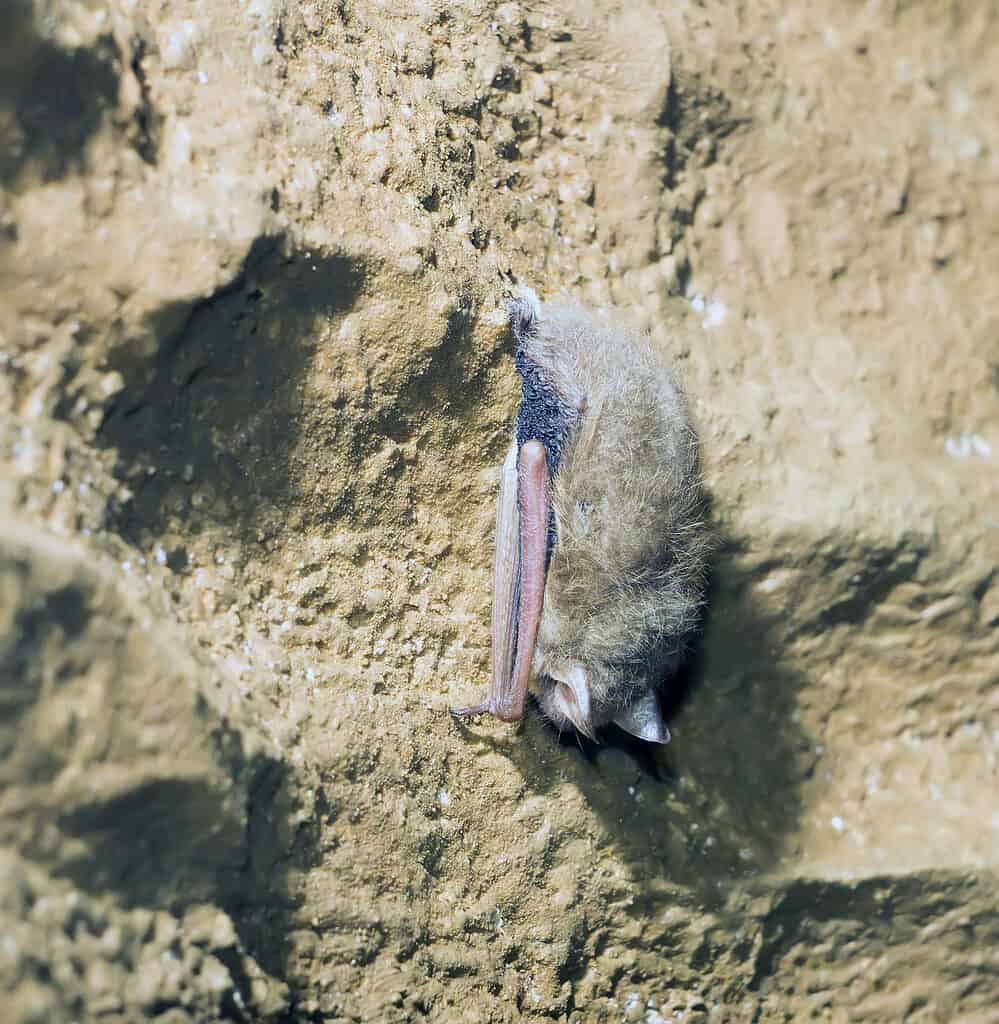
The endangered Indiana bat lives in John Friend Cave in Garrett County.
©IrinaK/Shutterstock.com
John Friend Cave is the oldest cave in Garrett County. It’s located east of Sang Run, around 800 feet north of Ginseng Run Road in the Greenbrier Limestone. However, it’s not open to the public and is also managed by The Nature Conservatory to protect the unique and rare species living within it. The opening is a small 4-by-8-foot opening leading to a 15-foot vertical drop. Inside, there are streams and mini waterfalls. Some species that call John Friend Cave home are five species of bat, including the eastern small-footed bat and the endangered Indiana bat, and three rare species of subterranean, aquatic crustaceans.
Summary of 12 Incredible Caves in Maryland
| Number | Cave Name | Location |
|---|---|---|
| 1 | Crystal Grottoes Caverns | Boonsboro |
| 2 | Camel’s Den Cave | Patapsco Valley State Park |
| 3 | Devil’s Hole Cave | Allegany County |
| 4 | Twiggs Cave | Twiggtown |
| 5 | Killiansburg Cave | Sharpsburg |
| 6 | Howell Caves | Williamsport |
| 7 | Round Top Summit Cave | Washington County |
| 8 | Two Lock’s Cave | Washington County |
| 9 | Tanglefoot Cave | Allegany County |
| 10 | Cumberland Bone Cave | Cumberland |
| 11 | Crabtree Cave | Swanton |
| 12 | John Friend Cave | Sang Run |
Thank you for reading! Have some feedback for us? Contact the AZ Animals editorial team.

